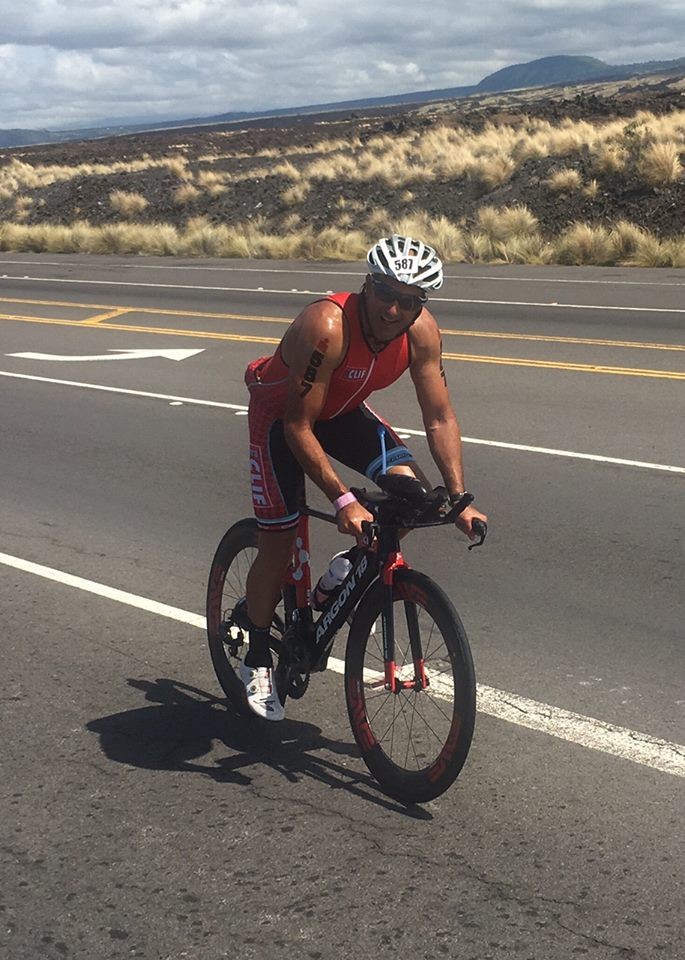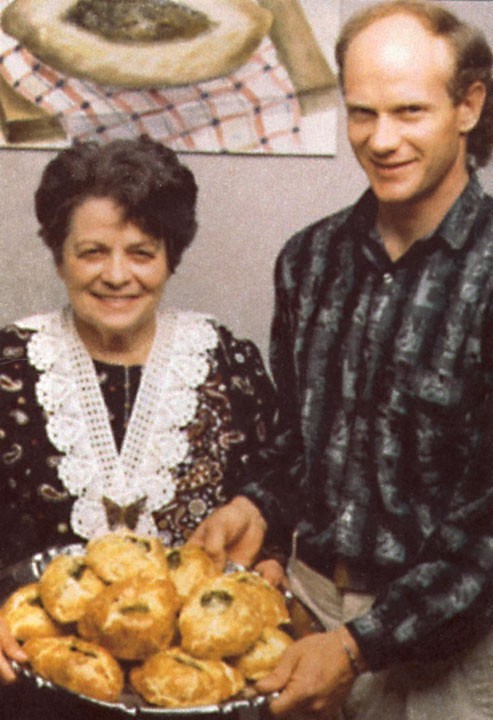One thing you’ll notice at the Clif Bar booth at the Natural Products Expo West Conference in Anaheim, California, is that six-packs (abs) and guns (biceps) are everywhere, including on Clif Bar founder Gary Erickson and CEO Kevin Cleary. (In fact, the only out of shape folks I saw at the entire conference were employees of a conventional mega-food conglomerate that purchased Annie’s Inc. in 2014.) Not everyone in the Clif Bar booth is in model shape, but they do appear to be the best versions of themselves — something you can’t help observing at first sight.
“I lost 32 pounds!” Alfred, the public relations coordinator for Clif Bar, told me. As a commuter father, Alfred never felt that he had time to work out. Having an on-site gym and childcare at Clif Bar & Co., and getting paid to work out ½ hour a day, left him with no excuses. And a big grin. It took just four months, and a change in diet and exercise to achieve.
“Going to work everyday [is] the best feeling in the world. I love what I do, and I love the people whom I work with,” Alfred told me. “I think if you were to ask any Clif Bar employee, they’d say the same thing,” Alfred continued.
At GlassDoor.com, Clif Bar employees give their CEO a 100% approval rating, and give the company 3.8 out of 5 stars. Most people applaud the perks (even those who gave the company bad reviews). The bad reviewers all wanted higher pay, and less clique-ish behavior. One person complained that the emphasis on fitness makes you feel like you can never be fit enough! Though not perfect, Clif Bar’s high engagement scores are peaks above the rest of the American workplace. According to a February 2017 Gallup report, 70% of employees are not engaged at work.
Clif Bar prides itself on unconventional employee perks, as part of a 5-Aspirations Bottom Line of sustainable business, brands, people, community and planet. So, with massages, sabbaticals, workouts, Friday 2-hour bike rides, ½ hour a day to work out (paid), does anyone actually get any work done? Clif Bar CEO Kevin Cleary laughed when I asked that question, saying that he’s never had to call anyone out for spending too much time in the gym. In fact, Kevin takes off at 3:30 this time of year to go coach his kids’ baseball teams. Kevin argued that packing on the perks for your people results in greater productivity. “Happy people are productive people,” Kevin told me. Alfred is proof of that. I had asked him for historical pictures and data to accompany this blog with a ridiculously difficult turnaround time. The information landed in my in-box within an insanely expeditious two hours.
Clif Bar co-owners Kit and Gary, and CEO Kevin Cleary, lead by example. When they say that Clif Bar is going to have 5 bottom lines, they put the systems in place to get there. The staff comes to work to keep the business and brands healthy, and take 20 hours off per year (PTO) to volunteer in the community, whether it’s coaching, like Kevin, or other philanthropic endeavors. On-site, you can work out, get a massage and take advantage of the day-care/preschool, so that you can have lunch with your children. And if you need help reducing your carbon footprint, you can take advantage of the many ways that Clif Bar promotes a clean commute, clean car and a clean home. Clif Bar offers stipends for hybrids and electric cars (up to $6500), for bikes ($500), for solar panels and residential energy efficiency (up to $1000/year), with up to $1500/year in employee credits for carpooling, biking, walking or taking public transportation to work that can be used toward massages, food and other partially subsidized benefits.

Quantifying Employee Perks and Productivity
According to Kevin Cleary, the turnover rate at Clif Bar is one of the lowest in the opportunity-rich environment of Silicon Valley — at 3–5% annually. He’s got employees that are taking their 3rd sabbatical; i.e. they’ve been with the company more than 21 years. (You get a paid 6–8 week sabbatical every seven years.)
Whatever performance gel the employees are drinking (or massages they are enjoying), the formula is definitely working. According to Natural Products Insider, “Clif Bar more than doubled its market share and sales in five years, and was on course to account for 7 percent of global snack bar sales by the end of 2016.” Clif Bar is a private company, so Gary Erickson wouldn’t confirm this statistic. In an industry where snack food sales by volume are declining, snack bars are expected to increase at an impressive Compound Annual Growth Rate of 6.7% through 2022 (source: Mordor Intelligence). According to Mordor Intelligence, snack bar sales were $4.29 billion in the U.S. in 2016, accounting for 42% of global sales, putting Clif Bar’s annual sales at approximately $715 million (assuming all the reported statistics and data are accurate).
That doesn’t mean everything is free and easy, or that Kit and Gary just caught a lucky break, with the wind of an exploding industry at their back. Gary laughed when I asked him what challenges he has faced throughout the years. “You can’t be in a competitive market without challenges. Every year has its own little adventure. We’re going against the big boys now!” he said. In fact, Clif Bar was founded because Gary didn’t like the Power Bar that was dominant in the marketplace. After an endurance bike ride that saw him burn through 5 power bars, he came home with a disgusting taste in his mouth, and challenged his mother to help him develop a bar that was nutrient-rich, high-performance and delicious, too.

There are now 20 flavor options of Clif Bar. 75% of the ingredients are organic — another challenging commitment that the company has made to the planet. Less than 1% of the farmland in the U.S. is organic. Supplying organic ingredients for a company with over half a billion in sales isn’t easy when most farmers grow conventional food. (There were 4.36 million organic farmland acres in 2015, compared to 915 million total U.S. farmland acres).
Saturday morning a group of inner-city tweens, led by gangsta gardener Ron Finley, was touring the Clif Bar booth at Expo West. “Why are you organic?” one kid asked CEO Kevin Cleary. “Because pesticides are bad for our soil and pollute our water,” Cleary answered.
“Why are you the CEO?” another tween inquired. “Because he’s better at it than we were,” Kit responded. Cleary was given the top spot on April 24, 2013.
By many measures, the 5-aspirations bottom line is working for Clif Bar — employee satisfaction, employee retention, sales growth and even a cultural shift to planetary sustainability. (The company didn’t offer profit margin information.) According to Kevin Cleary, 240 staff members have taken advantage of the Cool Car program, receiving $6500 to buy a hybrid or EV.
“We’re not perfect,” Kevin told me. “But we are moving the dial, and hopefully inspiring other companies and organizations to tackle some really heavy issues facing us as a human race today, whether it be global warming, or how we farm, or how people can get value from work. I’m hoping we can be a part of that solution,” he said.
As an avid eater of Clif Bars, now that I’ve learned the inside story, my go-to snack has become even more delicious.

Originally published at medium.com


